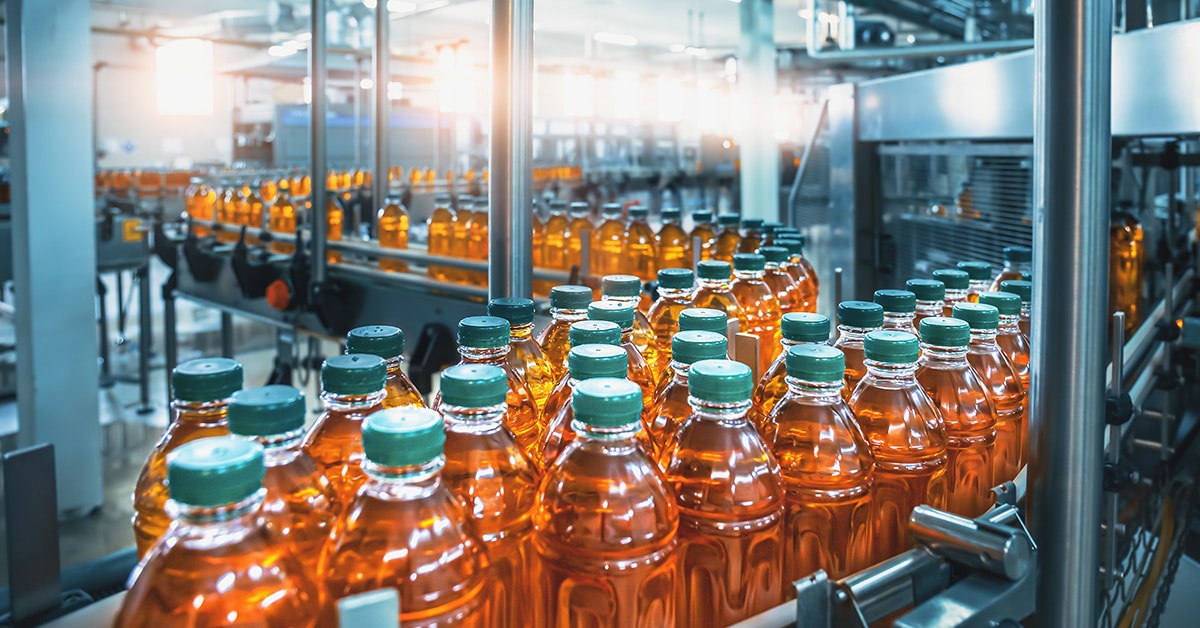Process manufacturing involves combining multiple materials or ingredients to produce a final product that cannot be separated back to its original components. There is a clear difference between process vs. procedure manufacturing. Procedure manufacturing details the specific step-by-step actions within the process, ensuring consistency, quality and compliance in executing each task.
In process manufacturing, formulas or recipes specify the quantity and type of materials required and provide step-by-step instructions for combining these materials. If instructions are not followed in order, outputs will be incorrect.
Process manufacturing industry examples include chemical and pharmaceutical production, oil and gas refining and food and beverage producers. In this post, we’ll break down the basics of process manufacturing, offer some examples of the process in action, explore potential challenges and offer best practices. These best practices include implementing predictive maintenance programs and leveraging maintenance partnerships to help establish reliable, repeatable processes.
Characteristics and examples of process manufacturing
Process manufacturing stands out for its distinct characteristics: identity, transformation and production flow. These elements collectively shape how raw materials evolve into finished products through seamless, formula-driven processes.
- Identity: In process manufacturing, materials are typically chemicals or compounds that possess specific properties. These materials are measured by volume or weight and become part of a larger whole when combined with other components.
- Transformation: Process outputs are transformed from their original components. Using tools such as reactors, distillation columns, mixing vats and specific chemical activators, materials undergo irreversible transformations. Consider whipped cream. Common components include heavy cream, sugar and vanilla extract. Once these components are combined and thoroughly mixed, they are transformed into whipped cream and can no longer be separated.
- Production Flows: Production flows in process manufacturing may be batch or continuous. Both focus on ensuring consistent quality, reliable yield and thorough mixing or transformation. The biggest difference in batch vs. continuous flows is quantity. Continuous manufacturing flows do not stop. They are continually producing products at a set rate. While the rate can be adjusted, the flow is ongoing. Batch manufacturing processes, meanwhile, use a set amount of materials to produce a specific quantity — a single “batch” of products — in response to customer demand.
Examples of process manufacturing in action
Some examples of process manufacturers include:
- Pharmaceuticals: Companies in the pharmaceutical industry leverage batch process manufacturing to produce set amounts of highly regulated medicines and health products.
- Food and beverages: Food and beverage businesses often use continuous, mass production flows to make popular products such as pasteurized milk or prepackaged snacks.
- Petrochemicals: Petrochemical organizations rely on batch process manufacturing via refineries or reactors to purify materials or transform them into usable fuel sources.
Challenges in process manufacturing
Process manufacturing also comes with several challenges, including:
- Equipment and asset complexity: Many process manufacturing companies rely on complex tools such as large-scale reactors, specialized piping architectures or sensitive instrumentation for industrial processing. These tools require precise calibration and monitoring. Improper calibration can lead to contaminated products.
- Strict regulatory oversight: Organizations must comply with regulatory requirements for their industry and specific manufacturing processes. For example, the FDA regulates pharmaceutical products, while the USDA is responsible for food safety. Failure to meet these obligations may result in product recalls.
- Continuous process manufacturing pressures: Plants running 24/7/365 processes don’t have downtime, making it harder to carry out comprehensive maintenance and implement manufacturing technology. Sudden failures mean unexpected stoppages, which are both costly and time-consuming.
Impacts of disruption or contamination on profitability
If production process lines are disrupted or products are contaminated, several impacts are possible. First are regulatory penalties. These may include fines, in-depth process audits or recall orders. Companies may also face reputation damage if consumers feel that quality is inconsistent or finished products are unsafe. Finally, businesses can lose money both from falling sales and from machinery downtime as operations are brought up to code.
Best practices for process manufacturing efficiency
To maximize process manufacturing benefits, operations must be agile, cost-effective and safe. But this combination doesn’t happen by accident. Four best practices can help.
- Lean and continuous improvement: Lean manufacturing techniques such as value stream mapping (VSM), Kaizen events and Gemba walks can help deliver continuous improvement. For example, Gemba walks see executives and operations managers actively walking production process lines to discover where processes are working, where waste is occurring and how efficiency can be improved without sacrificing quality.
- Automation and controls: Automated solutions such as advanced condition monitoring sensors, integrated control loops, parts inventory management solutions and connected SCADA or DCS systems can provide real-time monitoring and help maintain stable conditions. Combined as part of a process manufacturing software platform, these tools enable improved visibility and operational efficiency.
- Predictive maintenance and condition monitoring: AI-driven and sensor-based systems allow the forecasting of potential equipment failures before they halt production and can help companies achieve more sustainable manufacturing operations.
- Strict quality and safety protocols: This starts with in-depth hazard analysis, for example, HACCP in food manufacturing and GxP in pharmaceuticals. Companies should then build out these protocols with documented standard operating procedures and ongoing staff training.
Machine health monitoring for process manufacturing
Machines remain the core of process manufacturing. If machinery is not properly monitored, cleaned and maintained, the results can be costly and time-consuming. An outsourced maintenance company like ATS has the skills and experience to provide machine health monitoring that minimizes downtime and enhances output reliability. Our services include:
- Predictive maintenance programs: ATS predictive maintenance solutions include real-time monitoring of sensor data for vibration anomalies, temperature fluctuations or pressure problems. Teams then receive alerts before major breakdowns occur, helping them avoid costly downtime that could contaminate key processes.
- Maintenance partnerships: With ATS maintenance partnerships, companies get the support of skilled technicians to handle process-centric equipment operations, from clean-in-place (CIP) systems to more specialized mixers and reactors.
- Data integration and visibility: Businesses also benefit from the integration of machine health data into existing SCADA or ERP systems, enabling the use of real-time dashboards for decision-making.
Process manufacturing – a recipe for success
Success in process manufacturing starts by recognizing the transformative nature of production. This both underpins challenges in process manufacturing and informs best practices — which include continuous evaluation, proactive maintenance and the creation of strict quality and safety protocols.
Ready to find your recipe for success? Discover how reliability, maintenance and predictive services from ATS can help your plant sustain high outputs, improve compliance and enhance profitability. Let’s talk.






